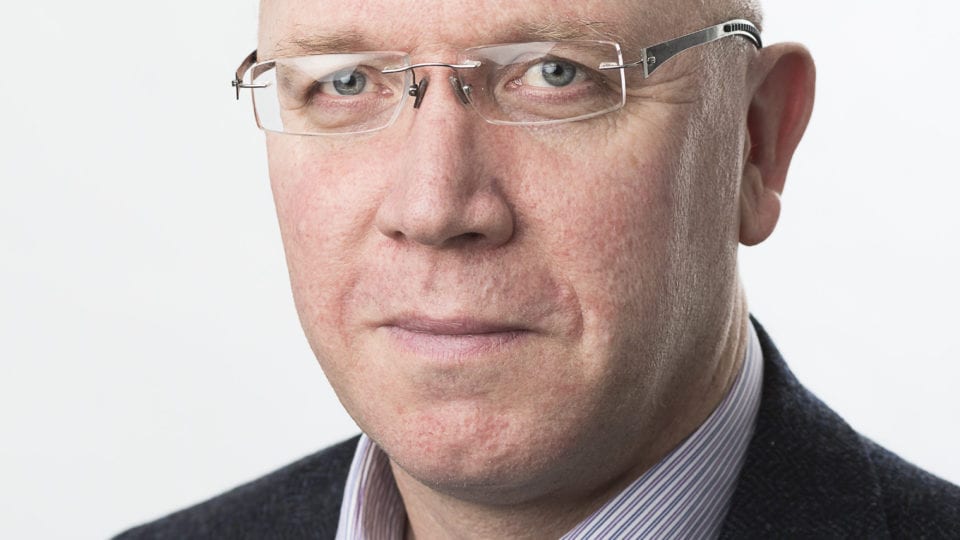Powering improvement
David Spillett, head of safety, health and environment at the Energy Networks Association (ENA), talks about why safety, both for staff and the public, is the highest priority for network companies.
5th February 2019 by Networks

Now that 2018 has become a recent memory, it is time to reflect on the successes but also learn from them to improve performance. Whatever the weather, we all need a reliable, safe supply of energy to keep our homes warm and the lights on. Our energy networks provide us with the energy we all need. Those that work in the industry have never been safer but we know that just one injury is one too many.
By 2020, for example, the UK electricity industry will have delivered a sustained improvement in health and safety performance by applying and influencing best practice approaches used in the top performing sectors in the UK and beyond.
One important reason for the improvement in performance has been the Powering Improvement programme. This sees Energy Networks Association and Energy UK companies working in partnership with Trade Unions, HSE and contractors to ensure our industry has a realistic and inclusive approach to health and safety at work.
The Powering Improvement programme recognises that all workers in our industry have the right to go to work each day and not be injured or made ill by their work. To achieve this we understand that employers in our industry have a legal and moral responsibility to create safe and healthy workplaces; employees have a legal duty to look after their own and their colleagues’ health and safety and to work with their employer.
Although we are pleased that the Total Recordable Incident Rate has fallen year on year, our focus remains on making sure that all staff are able to return home safely. As we review last year’s performance it is important we learn from it.
Learning from our experiences and continually improving is absolutely vital. The theme of this year’s Powering Improvement programme, Human and Organisational Factors, will address key issues and priorities for our industry by looking at ‘Learning and Improving’. This is also the theme of this year’s Energy Industry Safety, Health and Environment Management Conference which will be held in Reading at the Madejski Stadium on 22-23 May.
The occupational health and wellbeing of employees in the electricity sector is a priority for companies which should be approached with a high priority. Especially as working days lost to sickness and ill health far exceed those from accidents.
As part of the Powering Improvement programme we considered interventions and control measures that should form part of a mature response to the health risks within the electricity industry to ensure the physical and mental wellbeing of all employees in a healthy workplace. These have fed into the design of an Occupational Health Roadmap which is available on the Powering Improvement website.
This is providing interested parties with resources and information to help manage occupational ill health, as part of the industry wide effort to deliver world leading health and safety performance.
Although Powering Improvement is focused on occupational health and safety risks, public safety issues involving both members of the public and third-party contractors will continue to be addressed as a priority. ENA therefore also has a dedicated Public Safety Strategy “Our Commitment to Public Safety” that has been running since 2007.
One area of particular focus for us this year has been our work with Farming Safety Partnership. This is especially important given the dangers faced by those working in the agricultural industry coming into contact with electricity infrastructure. This includes raising awareness of the risks and making sure that everyone stays safe.
This strategy, which is supported by HSE, aims to reduce the number of incidents, in particular those causing fatalities and injuries, to members of the public (including network companies’ contractors) coming into contact with electricity transmission and distribution network assets.
Everyone has the right to go home uninjured and in good health at the end of each working day. We will, therefore, continue to work across the energy industry and with our partners in HSE and the Unions and keep our focus on the health and safety of employees and the public.
Comments
Login on register to comment
Related content

Power
The future for vegetation management
Why networks should focus on data not trees to overcome the costly challenges involved in vegetation management

Power
An unprecedented opportunity for change
Why short interruptions will matter in RIIO-ED2 and how to address them.

Power
Time for less talk and more action on decarbonisation
Core "oven-ready" solutions to decarbonising heat and transport exist today and should be implemented without delay, says WPD's future power networks expert.
Related supplier content

Power
Load patterns and lockdown: how Covid-19 is impacting electricity networks
Insights into dynamics on the low voltage network as the outbreak unfolds

Downloads
Protect electrical equipment from insulation failure
Insulation faults are a major cause leading to the eventual failure of electrical equipment. Partial discharge (PD) is a very reliable indicator of developing insulation faults. Regular PD testing allows users to detect and analyze PD activity

Heat
How E.ON. is helping the City of London become a zero emissions city
Discover Citigen. Deep in the heart of our bustling capital